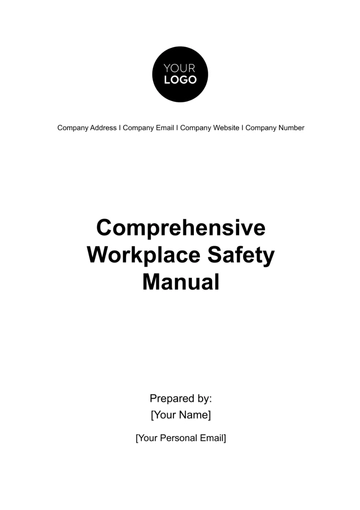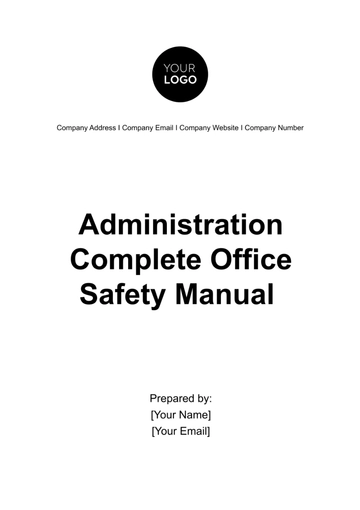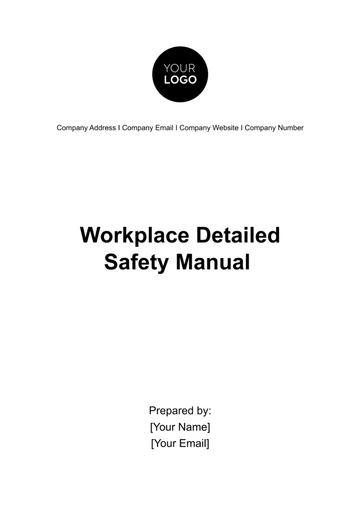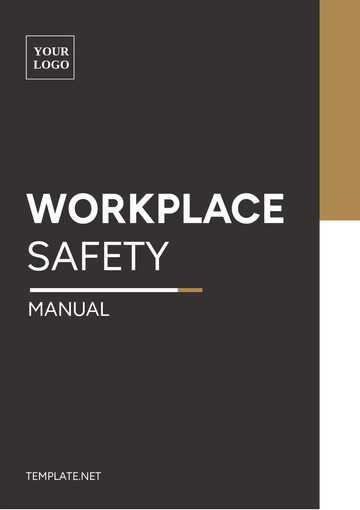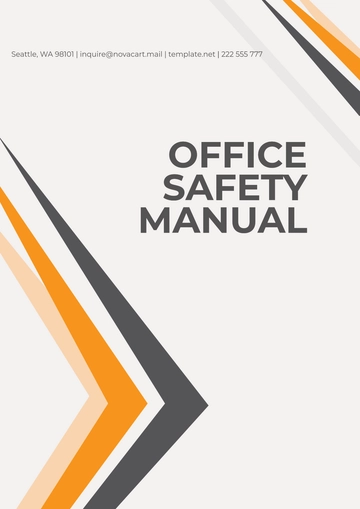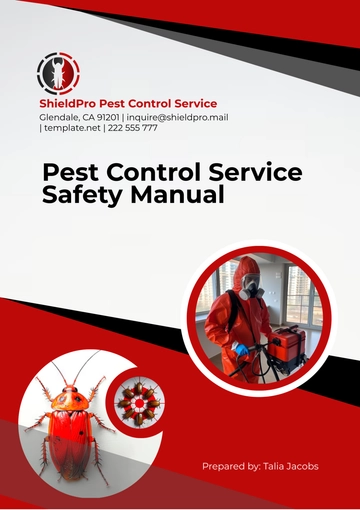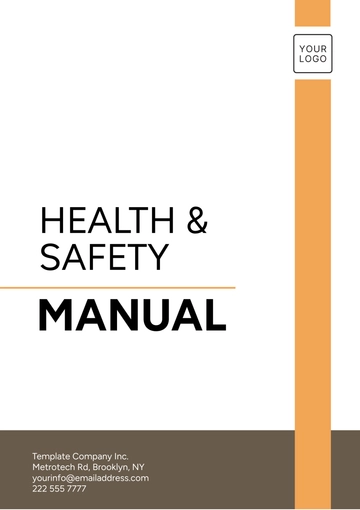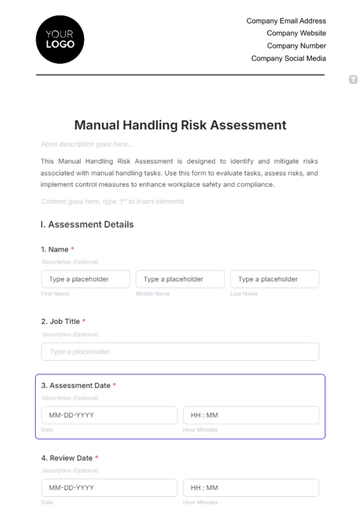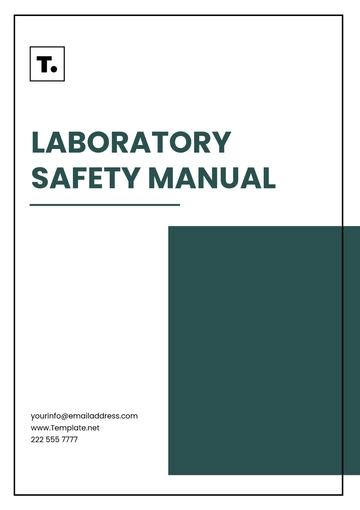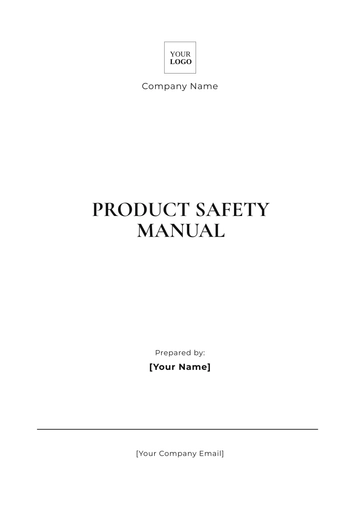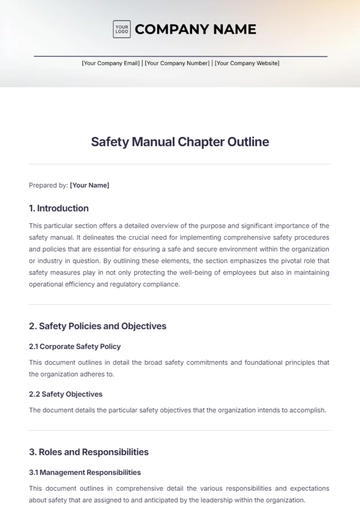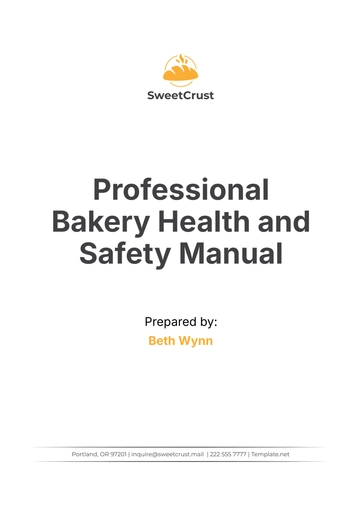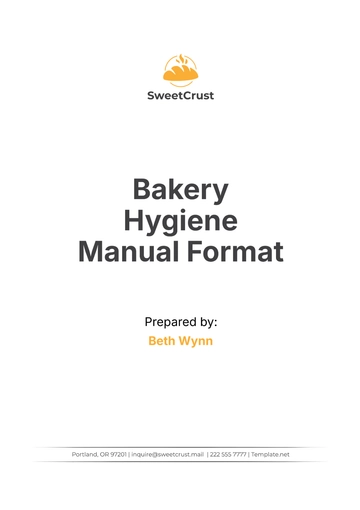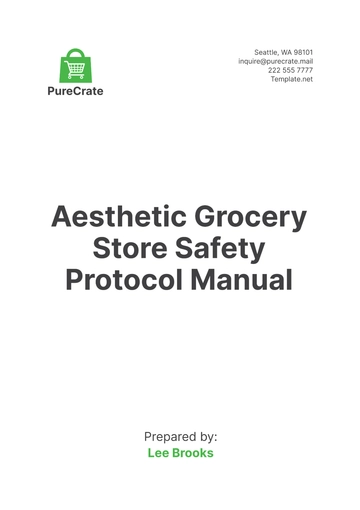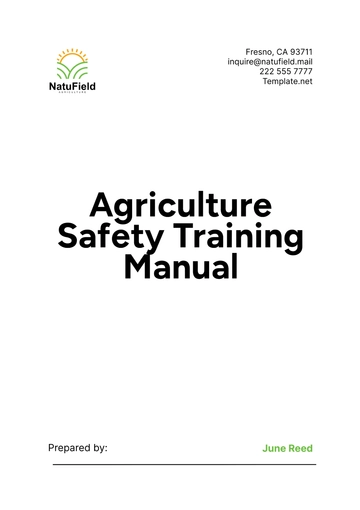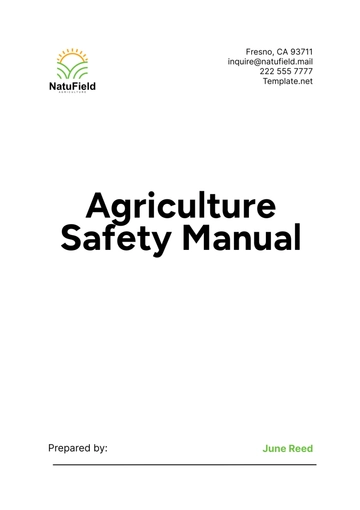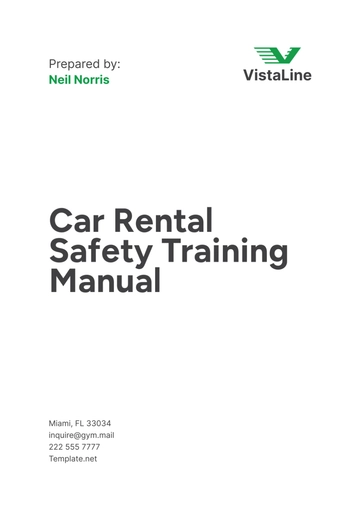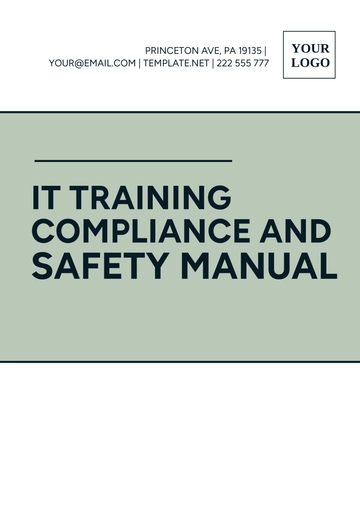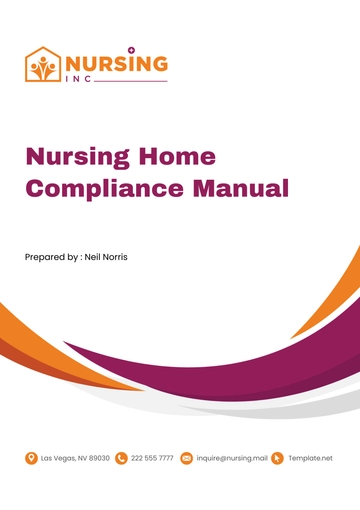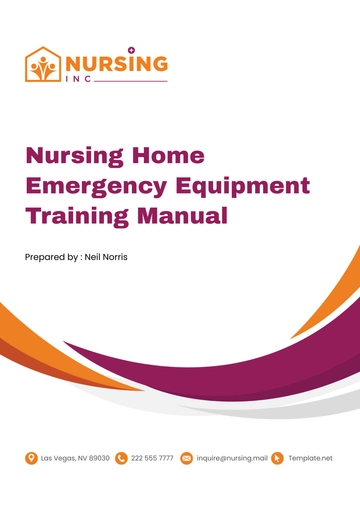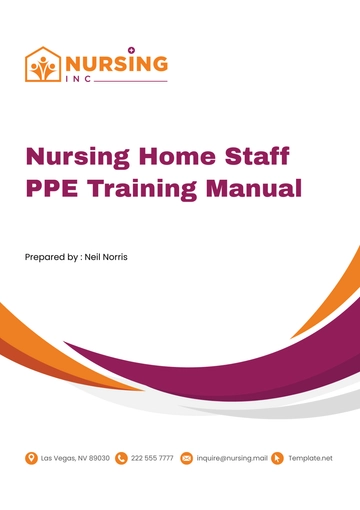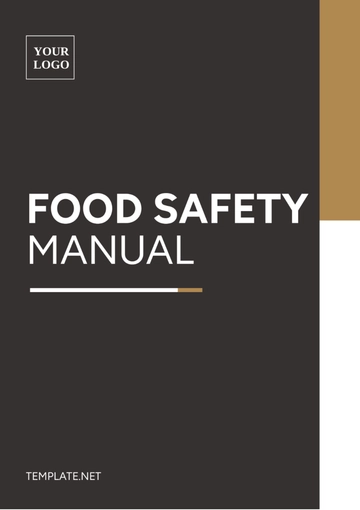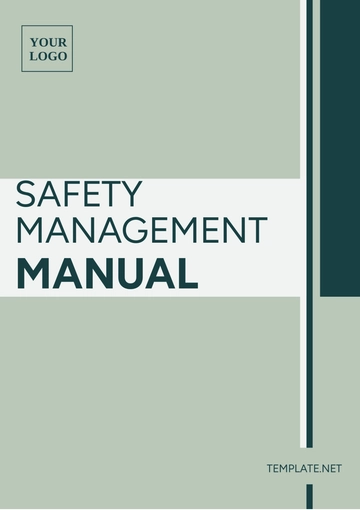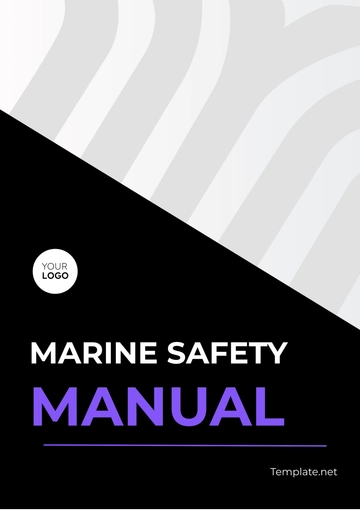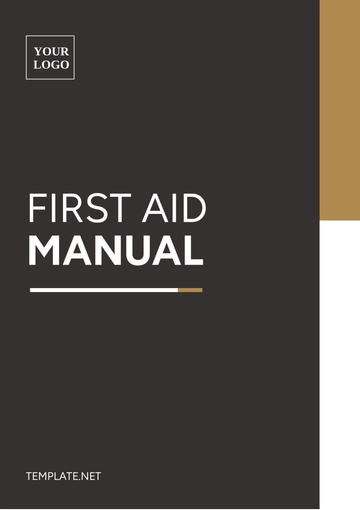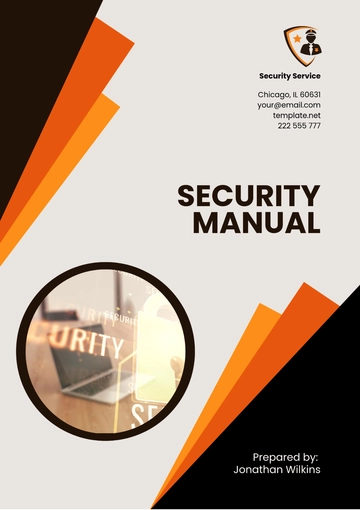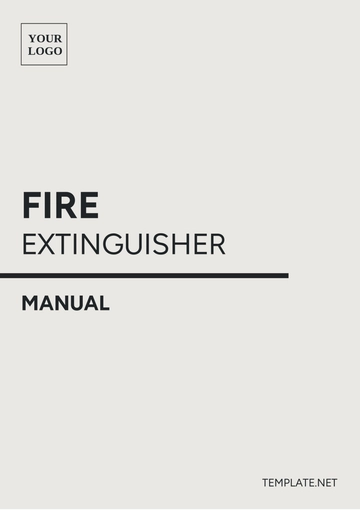Free Safety Committee Operational Manual HR
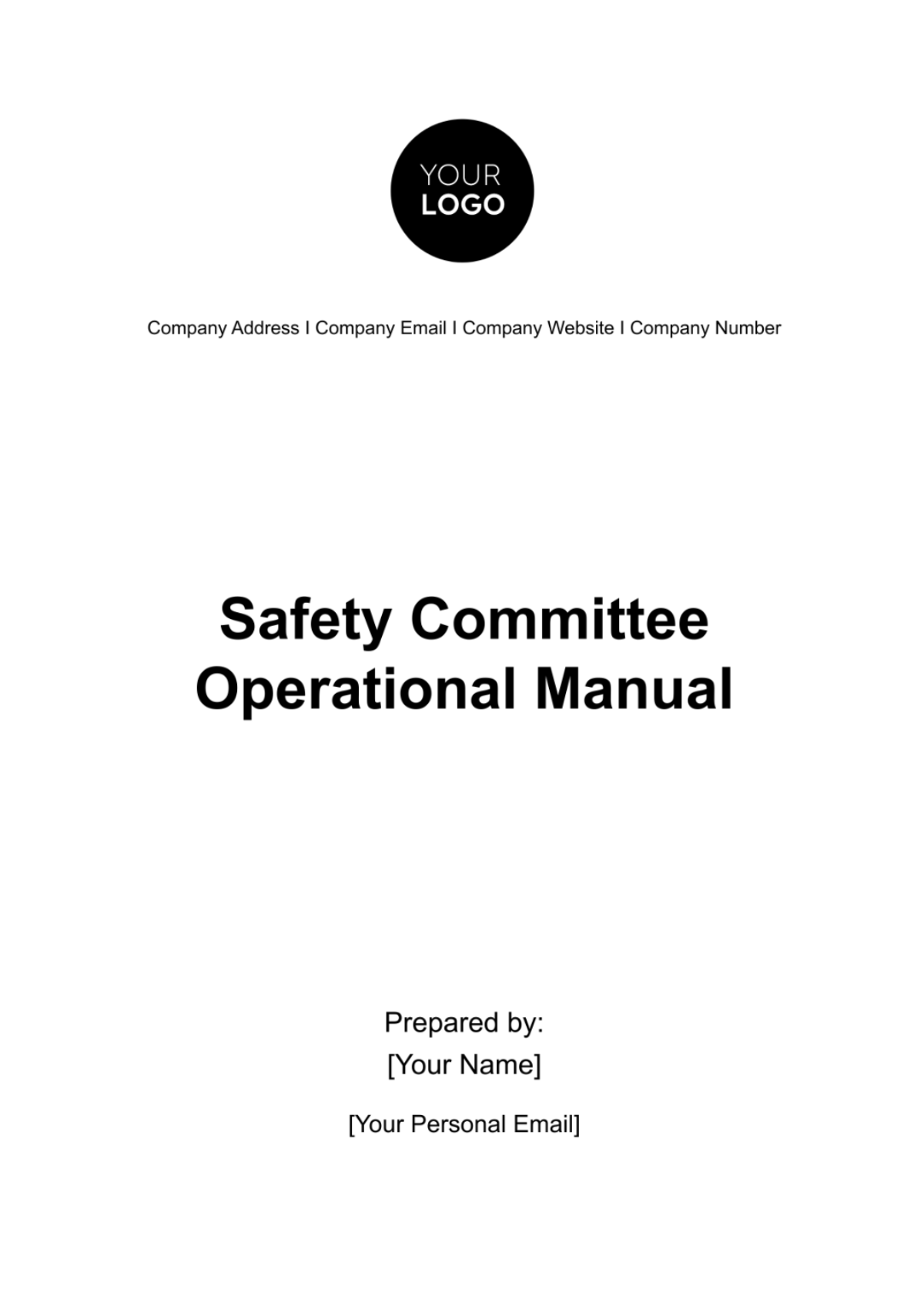
Purpose and Scope
The Safety Committee Operational Manual outlines the policies, procedures, and responsibilities for the Safety Committee at [Your Company Name]. Its purpose is to ensure a safe and healthy working environment for all employees, contractors, and visitors, as well as to comply with all relevant safety regulations.
Company Overview
[Your Company Name] specializes in the manufacturing of industrial equipment. The company operates in a facility that houses various production processes and machinery. Ensuring the safety of employees and the workplace is of paramount importance to the company's operations.
Committee Membership
The Safety Committee is composed of representatives from various departments and roles within the company, including production, maintenance, administration, and management. The committee members are appointed by department heads and serve a term of one year, with the possibility of reappointment.
Chairperson | Leads meetings, sets the agenda, and ensures committee objectives are met. |
Members | Actively participate in committee activities, provide input, and represent their respective departments. |
Safety Officer | Provides guidance, support, and technical expertise to the committee. |
Term Limits
Committee members are appointed for a term of two (2) years. Initial appointments are staggered to ensure continuity. Half of the committee members are appointed in even-numbered years, and the other half in odd-numbered years. Members may serve for a maximum of two consecutive terms, totaling four years. After serving two consecutive terms, members are required to step down from the committee for a minimum of one (1) year before becoming eligible for reappointment.
To maintain a balanced and diverse committee, members who have served two consecutive terms may be considered for reappointment after the one-year break, but priority will be given to new nominees. Members who step down from the committee may still participate in safety initiatives and subcommittees, providing valuable input and support.
Meeting Frequency
The Safety Committee meets monthly on a predetermined schedule. Special meetings may be called in case of emergencies or urgent safety matters.
Agendas are distributed to committee members prior to each meeting and include topics for discussion, action items, and updates. Meeting minutes are documented and distributed within one week after the meeting, outlining discussions, decisions, and action items.
Communication Channels
The committee communicates through emails, meetings, and a dedicated communication platform. All employees are encouraged to submit safety concerns and suggestions through a designated anonymous reporting system.
Reporting Hazards
Employees are encouraged to report hazards promptly using the Safety Hazard Report Form. Completed forms should be submitted to their immediate supervisor or department head. If the hazard poses an immediate danger, appropriate action must be taken to mitigate the risk.
Date and Time: Name: Department: Contact Information: | March 10, 2050, 09:30 AM Marion Bryson Production 222 555 777 | |||||||
Hazard Description | There is a puddle of oil near the CNC machine in the production area. It's slippery and poses a slipping hazard to anyone passing by. | |||||||
Location | Production Area, near CNC Machine #3 | |||||||
Severity | High (based on risk assessment) | |||||||
Action Taken | Placed a "Caution: Slippery Surface" sign near the oil puddle. | |||||||
Recommended Actions | Assign someone to clean up the oil spill immediately. Investigate the cause to prevent future spills. Ensure proper maintenance of CNC machines to prevent leaks. | |||||||
Supervisor Review | Reviewed the report and assigned the maintenance team to clean up the spill | |||||||
Date of Resolution | March 10, 2050, 10:15 AM | |||||||
Hazard Assessment
The [Your Company Name] reviews and assesses reported hazards. A Hazard Assessment Team is formed to evaluate the severity, likelihood, and potential consequences of each reported hazard. The team uses the Hazard Assessment Matrix.
Hazard | Severity (1-5) | Likelihood (1-5) | Potential Consequences | Risk Level |
|---|---|---|---|---|
Wet Floor | 2 | 4 | Slips, trips, and falls resulting in minor to moderate injuries. | Medium |
High Voltage | 5 | 2 | Electrocution, serious injuries, or fatalities. | High |
Chemical Exposure | 4 | 3 | Burns, poisoning, long-term health effects. | High |
Falling Objects | 3 | 3 | Head injuries, fractures, or fatalities. | Medium |
Trip Hazard | 2 | 4 | Trips leading to minor to moderate injuries. | Medium |
Radiation Exposure | 5 | 1 | Cancer, radiation sickness, long-term health effects. | High |
Severity Scale:
1: Negligible – Minor injuries, no or minimal health effects.
2: Minor – Minor injuries requiring first aid.
3: Moderate – Serious injuries requiring professional medical treatment.
4: Major – Life-threatening injuries with potential for permanent disability.
5: Catastrophic – Fatalities or widespread catastrophic effects.
Likelihood Scale:
1: Rare – May happen only in exceptional circumstances.
2: Unlikely – Could happen at some time.
3: Possible – Might happen at some time.
4: Likely – Will probably happen in most circumstances.
5: Almost Certain – Expected to happen in most circumstances.
Risk Level:
Low: Low priority. Monitor the situation to ensure that the risk does not increase.
Medium: Moderate risk. Requires specific monitoring or action to reduce the risk.
High: High priority. Immediate action is required to mitigate the risk.
Risk Mitigation
Based on the hazard assessment, the committee identifies appropriate risk mitigation strategies. Mitigation strategies are selected from the Hazard Mitigation Options Table. The responsible department or individual is assigned to implement the chosen strategy. Progress is monitored, and the hazard is re-evaluated to ensure effectiveness.
Hazard Type | Mitigation Options |
Physical Hazards | Engineering controls, machine guarding, barricades |
Chemical Hazards | Ventilation systems, personal protective equipment |
Biological Hazards | Isolation procedures, vaccinations, hygiene protocols |
Ergonomic Hazards | Workspace redesign, ergonomic equipment |
Psychosocial Hazards | Employee counseling, stress management programs |
Incident Reporting
All incidents, accidents, and injuries must be reported immediately to supervisors and the safety officer. An incident report form is used to document details.
Any employee who witnesses or is involved in an incident must report it immediately to their immediate supervisor. The supervisor must complete an Incident Report Form within 3 Days. The completed form is submitted to the Safety Officer for review.
Investigation Process
The committee conducts thorough investigations of incidents to determine root causes. Corrective and preventive actions are then proposed and implemented
The Safety Officer forms an Incident Investigation Team within 2 Days of receiving the incident report. The team identifies root causes and contributing factors. Corrective and preventive actions are proposed and assigned to responsible individuals or departments.
Corrective Actions
Corrective actions may involve process changes, additional training, equipment modifications, or disciplinary measures as needed to prevent future incidents. Corrective actions are prioritized based on their impact and feasibility.
Responsible individuals or departments are assigned to implement each corrective action. A timeline for implementation is established. Progress is monitored regularly until all corrective actions are completed.
Training Programs
[Your Company Name] provides comprehensive safety training programs for employees, contractors, and new hires. The committee ensures training compliance and evaluates its effectiveness.
The Training Coordinator develops an annual training plan based on identified training needs. Employees are scheduled for mandatory safety training sessions. Training records are maintained to track employee training progress.
Training Topic | Target Audience | Training Date |
Fire Safety | All Employees | January 15 |
First Aid/CPR | Designated First Aid Team | February 20 |
Hazardous Materials | Chemical Handlers, Supervisors | March 25 |
Electrical Safety | Maintenance Staff | April 10 |
Fall Prevention | All Employees | May 15 |
Machine Safety | Machine Operators | June 20 |
Emergency Response | Emergency Response Team | July 10 |
Hazard Communication | Chemical Handlers | August 15 |
Lockout/Tagout | Maintenance Staff | September 10 |
Confined Space Entry | Confined Space Workers | October 15 |
Respiratory Protection | Respiratory Users | November 20 |
Workplace Ergonomics | Office Employees | December 10 |
Awareness Campaigns
Regular safety awareness campaigns are conducted to keep safety at the forefront of employees' minds. These campaigns utilize posters, newsletters, and safety reminders.
Campaign Title | Month | Description |
"Safe Work Month" | January | Promotes safety throughout the month |
"Fall Prevention" | March, September | Focuses on preventing fall incidents |
"Electrical Safety" | April | Raises awareness about electrical hazards |
"Emergency Preparedness" | July | Promotes readiness for emergencies |
"Chemical Safety" | May | Emphasizes safe handling of chemicals |
"Machine Safety" | June | Focuses on safe machine operation |
"Fire Safety" | October | Promotes fire prevention and safety |
"Health and Wellness" | November | Encourages employee well-being |
"Year-End Safety Review" | December | Reviews the year's safety achievements |
Compliance Monitoring
The committee monitors compliance with safety policies and regulations through regular audits and assessments. Non-compliance issues are addressed promptly.
Emergency Plans
The Emergency Response Team develops and updates emergency response plans for various scenarios. Plans are communicated to all employees and contractors. Plans are reviewed annually and after any significant facility changes.
Evacuation Procedures
Evacuation routes and assembly points are clearly marked and communicated to all employees. Regular evacuation drills are conducted.
Drill Type | Frequency | Date of Last Drill | Observations/Notes |
Fire Drill | Quarterly | January 10, 2050 | Evacuation time improved compared to the last drill. |
Chemical Spill Drill | Bi-annually | March 20, 2050 | Smooth evacuation, but communication can be enhanced. |
Severe Weather Drill | Annually | May 30, 2050 | Employees responded well to shelter instructions. |
Cybersecurity Drill | Annually | August 15, 2050 | Systems successfully isolated during the drill. |
Active Shooter Drill | Bi-annually | October 25, 2050 | Improved response time and communication. |
Medical Emergency Drill | Quarterly | December 5, 2050 | Medical team response was prompt and efficient. |
Emergency Drills
Emergency drills are conducted annually to ensure all employees are familiar with evacuation procedures and emergency response protocols.
Emergency drills are announced to employees in advance. Drill coordinators oversee the drill and evaluate employee responses. After each drill, a debriefing session is held to discuss strengths and areas for improvement.
Inspection Schedule
Regular safety inspections are conducted by committee members and department representatives. Inspection schedules are established to cover all areas of the facility.
External safety audits are conducted annually by a qualified third-party auditor. Internal audit findings are reviewed by the committee, and corrective actions are tracked.
Findings and recommendations from inspections and audits are documented, and actions are taken to address identified issues.
- 100% Customizable, free editor
- Access 1 Million+ Templates, photo’s & graphics
- Download or share as a template
- Click and replace photos, graphics, text, backgrounds
- Resize, crop, AI write & more
- Access advanced editor
Introducing the Safety Committee Operational Manual HR Template from Template.net, a pivotal resource for establishing effective safety committee operations within your organization. Fully editable and customizable, this template empowers you to shape it according to your specific needs through our AI Editor tool, making it an essential tool for HR departments committed to fostering a safe and secure work environment.
